“I wrote Surprise Moon to show children all about the Vietnamese Mid-Autumn Moon Festival (Tet Trung Thu), its lanterns, parades, moon cakes, and family fun.”

Mid-Autumn Moon Festival:
Sept. 15, 2016
Oct. 3, 2017 (Pacific Standard Time Zone) or Oct. 4, 2017 (Eastern Time zone)
Sept. 23, 2018
May is Asian-Pacific American Heritage Month.
Go to:
Sample Pages
Buy the book
For Teachers: Common Core Standards Alignment and more
Illustrator Felicia Hoshino
Book Description:
Nick shows his friends how to celebrate the Vietnamese Autumn Moon Festival, Tet Trung Thu. They’re in for a delicious surprise when they share moon cakes!
Level: Guided Reading Level I
Intervention: 16
DRA: 16
Paperback, 16 pages, 211 words + Note
Publisher: Bebop Books, an imprint of Lee & Low Books
English:
ISBN-13 978-1-58430-526-2
Six Pack: 978-1-58430-525-5
Spanish:
ISBN 978-1-58430-524-8
Six Pack: 978-1-58430-523-1
Surprise Moon is included in nine of Bebop Books’ collections, such as the Teachers College Reading Assessment Kit for Grades K-2, Asian American English Collection for Grades PreK-2, Nonfiction Collection for Grades PreK-2, and more.
Sample Pages:

“It’s party time!” said Nick.
“Is it your birthday?” asked Pam.
“No,” said Nick. “It’s the Autumn Moon Festival.”
“What’s that?” asked Bob.
“It’s a holiday in Vietnam, where my dad is from,” said Nick.

“We can carry lanterns in a parade,” said Nick.
“I want the red car,” said Pam.
“I want the blue fish,” said Nick.
“I don’t want the pink butterfly,” said Bob.
Buy the Book:
Click here: http://www.leeandlow.com/books/277/pb/surprise_moon
For Teachers:
Common Core Standards Alignment:
See below or click here for PDF version.
GRADE 1 Standard Alignment/Text Features:
- Literature; Key Ideas and Details; 1 (ex: In the story, what happened first? Second? Third? Last? How do you know? What was the book mostly about?)
- Literature; Key Ideas and Details; 3 (ex: Where did the story take place? How do you know? Who were the characters in the story? What makes you think that? What was happening in the story? How did the story end? How do you know?),
- Literature; Craft and Structure; 6
- Literature; Integration of Knowledge and Ideas; 7(ex: Turn to pages 4-5. How does the illustrator help you understand the tricky words on page 4? What clues does the illustrator give you?)
- Literature; Range of Reading and Level of Text Complexity; 10
- Foundational Skills; Print concepts; 1 a
- Foundational Skills; Phonological Awareness; 2 a-d
- Foundational Skills; Phonics and Word Recognition; 3 a-f (it’s, said, is, it, your, asked, no, the, what’s, that, a, where, my, dad, from, we, can, in, I, want, red, blue, don’t, you, make, with, big, off, they, went, down, came, out, of, their, houses, yes, this, not, best, was, very, than, all, mom, her, their, inside)
- Foundational Skills; Fluency; 4 a-c
- Language Standards; Vocabulary Acquisition and Use; 6
GRADE 2 Standard Alignment/Text Features:
- Literature; Key Ideas and Details; 1 (ex: Where did the story take place? How do you know? Who were the characters in the story? What makes you think that? What was happening in the story? What special holiday was the story about? What did you learn about that holiday? How did the story end? How do you know?),
- Literature; Key Ideas and Details; 2(ex: What happened first in the story? Next? Then? Last? What was the book mostly about? How do you know?)
- Literature; Craft and Structure; 4
- Literature; Craft and Structure; 5 (ex: How did the author choose to begin the story? What were the children doing? How did they feel about it? What happened in the middle of the story? How did the author choose to end the story? How did the author choose to end the book? Use details from the text to support your answer.)
- Literature; Craft and Structure; 6 (ex: How do you think the children felt at the beginning of the story? In the middle? At the end? What about Nick’s parents? How are they feeling? How do you think the author feels about the Autumn Moon Festival? What makes you think that?)
- Literature; Integration of Knowledge and Ideas; 7 (ex: Turn to pages 2-3. How does the illustrator help us figure out the following: who are the characters? How are they feeling? What are they doing? What are they going to do next?)
- Literature; Range of Reading and Level of Text Complexity; 10
- Foundational Skills; Phonics and Word Recognition; 3 a-f
- Foundational Skills; Fluency; 4 a-c
- Language Standards; Vocabulary Acquisition and Use; 6
Teacher’s Guide:
Click here.
Activity:
Have a Moon Festival Parade for Tet Trung Thu!
Have the children wear Vietnamese conical hats, carry either a paper lantern or a noisemaker, and walk to Vietnamese music (links below).
Look for inexpensive Vietnamese conical hats, small paper lanterns, and (in the fall) moon cakes at Asian markets. Although lanterns are usually carried at the end of a stick, it might be safer to forget the sticks.ウエット ティッシュ 名 入れ
You can make a toy paper lantern from a colored paper rectangle (8.5 x 5.5) and a piece of string. Bring together the two short sides of the paper to form a cylinder. Tape in place. Tape the two ends of the piece of string to the opposite sides of the cylinder, at the top. Carry your “lantern” by the string.
Children can make a toy tambourine by decorating an aluminum foil dish with stickers, or they can make noise by clapping.
Vietnamese music for your parade:
Click here or here (then click on “Play”) for free music that plays again and again.
Illustrator Felicia Hoshino:
 Felicia Hoshino was born in San Francisco, California. A graduate of the California College of the Arts, she is a full-time illustrator and graphic designer. As a child, she enjoyed celebrating customs of her own Japanese heritage, includin
Felicia Hoshino was born in San Francisco, California. A graduate of the California College of the Arts, she is a full-time illustrator and graphic designer. As a child, she enjoyed celebrating customs of her own Japanese heritage, includin




 Common advice for those who hire a translator is to make sure he or she will translate INTO his or her native
Common advice for those who hire a translator is to make sure he or she will translate INTO his or her native  language—to avoid embarrassing goofs. As the exception that proves the rule, I translate scientific and technical material from my first language, French, into English. I deliver fine products because I live immersed in English, in the U.S. where references in English are readily accessible. My writing seems good enough compared to the international language of science—broken English! I have co-authored 28 scientific articles and encyclopedia chapters, and received the Society for Technical Communication Excellence Award twice.
language—to avoid embarrassing goofs. As the exception that proves the rule, I translate scientific and technical material from my first language, French, into English. I deliver fine products because I live immersed in English, in the U.S. where references in English are readily accessible. My writing seems good enough compared to the international language of science—broken English! I have co-authored 28 scientific articles and encyclopedia chapters, and received the Society for Technical Communication Excellence Award twice.


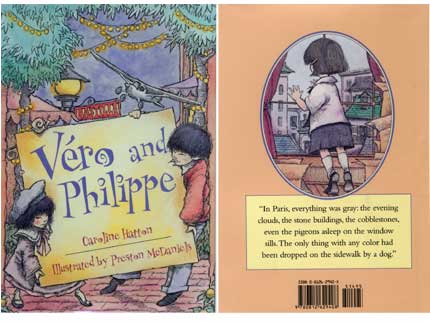

 Children’s illustrator Preston McDaniels illustrated the Lighthouse Family series books by Newbery Award winner Cynthia Rylant and other works by popular authors. He lives in Aurora, Nebraska.
Children’s illustrator Preston McDaniels illustrated the Lighthouse Family series books by Newbery Award winner Cynthia Rylant and other works by popular authors. He lives in Aurora, Nebraska. Véro and Philippe was published in Korean in South Korea by Hwanni Books.
Véro and Philippe was published in Korean in South Korea by Hwanni Books.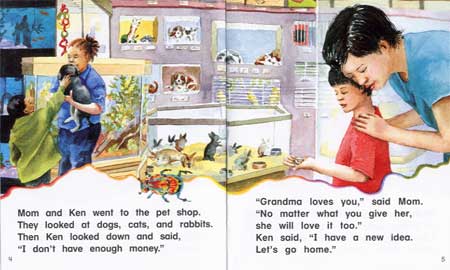
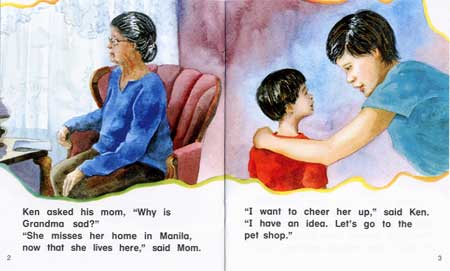

 Suzanne Accetta has been drawing and painting professionally for over twenty-five years. She has won numerous awards and her paintings are exhibited internationally in public, private and corporate collections. She has designed critically acclaimed theater sets, and she teaches drawing and painting for the theater at Otterbein College. See more of Suzanne’s art works at http://www.suzanneaccetta.com.
Suzanne Accetta has been drawing and painting professionally for over twenty-five years. She has won numerous awards and her paintings are exhibited internationally in public, private and corporate collections. She has designed critically acclaimed theater sets, and she teaches drawing and painting for the theater at Otterbein College. See more of Suzanne’s art works at http://www.suzanneaccetta.com.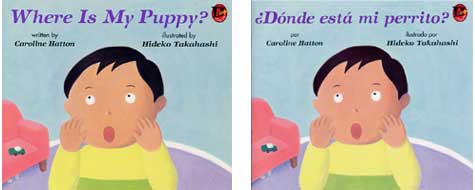



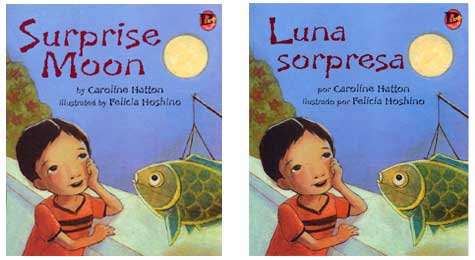



 Felicia Hoshino was born in San Francisco, California. A graduate of the California College of the Arts, she is a full-time illustrator and graphic designer. As a child, she enjoyed celebrating customs of her own Japanese heritage, includin
Felicia Hoshino was born in San Francisco, California. A graduate of the California College of the Arts, she is a full-time illustrator and graphic designer. As a child, she enjoyed celebrating customs of her own Japanese heritage, includin
 <align=”right”>“Fabulous!”
<align=”right”>“Fabulous!” “A huge hit with our 7th-graders and adults.”
“A huge hit with our 7th-graders and adults.”
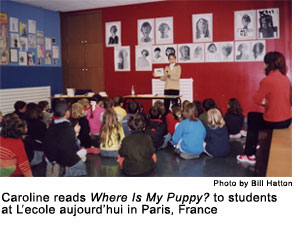 Past President
Past President
 By age sixteen, all this reading had led to a passion for science, so she took a detour from fiction writing to become a scientist. After earning a pharmacist degree from the University of Paris and a Ph.D. in Chemistry from UCLA, she became the Associate Director of the UCLA Olympic Laboratory, helping Dr. Don Catlin and his team test athletes for performance-enhancing drugs. Yet she never lost sight of her desire to write, so in recent years, she rearranged her life to fulfill it.
By age sixteen, all this reading had led to a passion for science, so she took a detour from fiction writing to become a scientist. After earning a pharmacist degree from the University of Paris and a Ph.D. in Chemistry from UCLA, she became the Associate Director of the UCLA Olympic Laboratory, helping Dr. Don Catlin and his team test athletes for performance-enhancing drugs. Yet she never lost sight of her desire to write, so in recent years, she rearranged her life to fulfill it.



